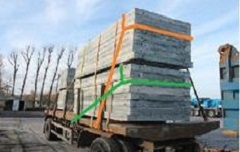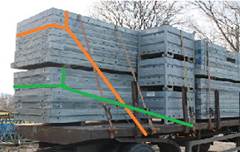| Photo of the month – January 2014 |
[German version] |
| Guardian angel in Saxony Looking at the following photographs, we have to conclude that there must have been a guardian angel nearby. There is almost no other way to explain how lucky this driver was. 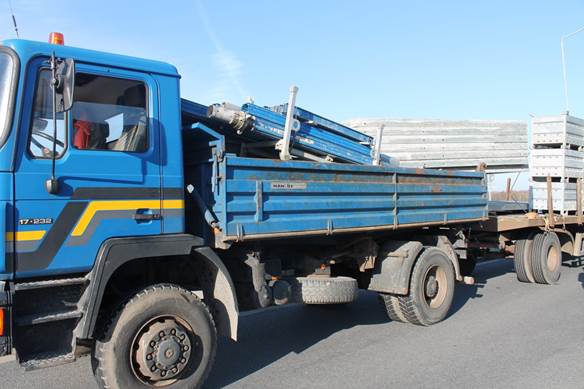 Figure 1 [Dresden Police] 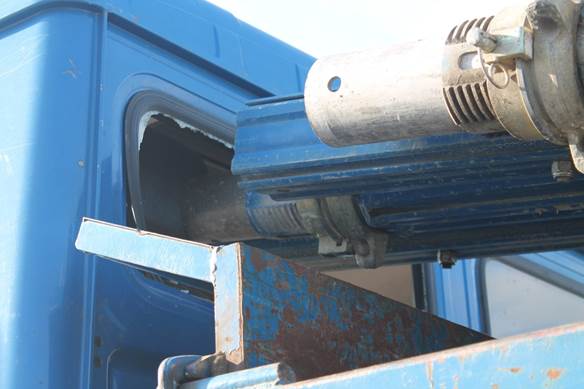 Figure 2 [Dresden Police] So what happened? Let us have a look at the load on the truck. At the front left, there are two stacked frames containing steel supports (see Figure 7). The supports have been strapped to the frames with steel straps to form load units. At the front right, we see shuttering boards that have also been strapped together with steel straps. So far so good. But how have these load units been secured to the vehicle? Not at all! They are standing on the somewhat dirty loading surface, they have not been lashed down, and no anti-slip material has been used. Although the vehicle is fitted with robust side gates, the load was not loaded as a tight fit, at least not to the front and back. 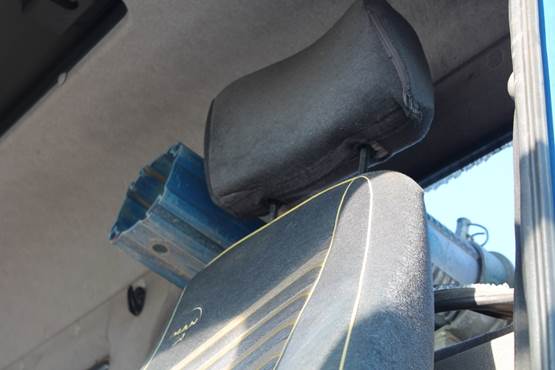 Figure 3 [Dresden Police] So what caused the steel supports to slip forward and penetrate the rear window of the driver's cab? Police records show that the driver said he was approaching a set of traffic signals on the right-hand lane of a road junction when they switched from green to amber. He braked a little more sharply than usual and the load slipped past him onto the road and some of it penetrated the driver's cab. There is some evidence to show that the driver did not completely stop his vehicle, but continued turning right. The trailer was loaded with a number of shuttering boards bundled together as a load unit with steel straps. Despite resting on anti-slip mats and being lashed down, two of the packages slipped forward into the tractor vehicle. One of the packages collided with the top frame and pushed the top and bottom frames forward until two of the steel supports penetrated the rear window. One of the supports was stopped by the driver's headrest and the other slid past the headrest and the driver's head. At this moment, the guardian angel would have had his hands full! Supports in the bottom frame arrested the entire package when they hit pieces of squared lumber that were stowed against the end wall. 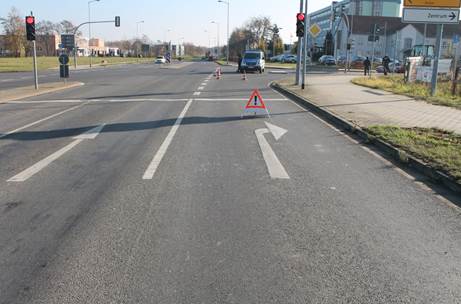 Figure 4 [Dresden Police] 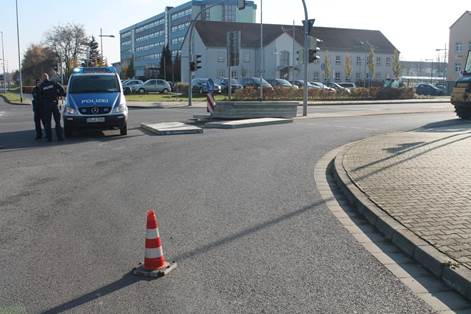 Figure 5 [Dresden Police] The second package of shuttering boards slipped off the loading bed to the left and onto the road close to a pedestrian crossing. This caused slight damage to the road surface. The guardian angel made sure that there were no pedestrians or other road users in the vicinity at the time. 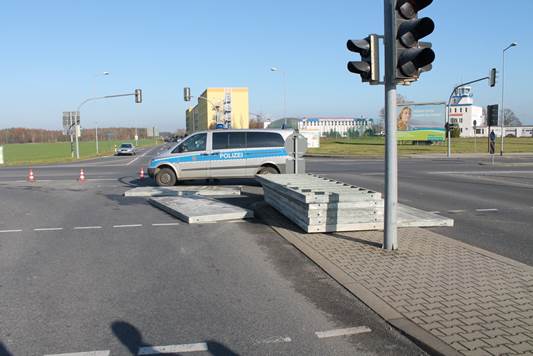 Figure 6 [Dresden Police] 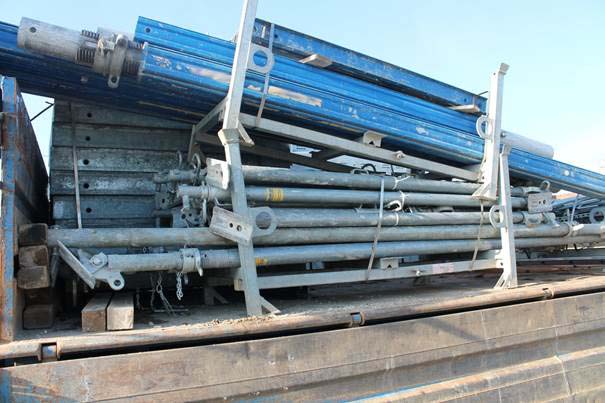 Figure 7 [Dresden Police] 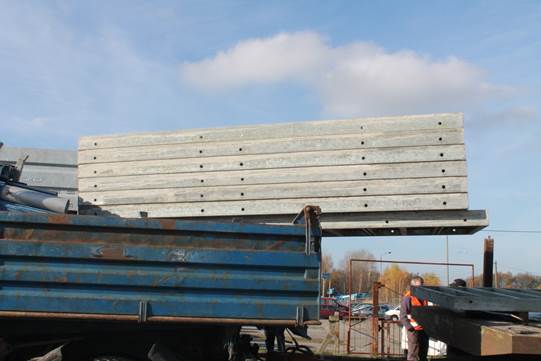 Figure 8 [Dresden Police] Figure 8 clearly shows that a package which was originally on the trailer is now on the tractor vehicle. Figure 9 shows that one shuttering board has remained on the trailer, which did not possess an end wall. The shuttering boards were secured as follows: Two pieces of squared lumber were placed on edge below the bottom board as dunnage to facilitate stacking. These had a groove machined into them. A steel strap held in place by this groove secured the lumber to a stack of eight boards, forming a load unit. A second package, bundled in the same way, was placed on top of this load unit. Anti-slip mats were placed directly on the loading surface. This explains why the bottommost board remained on the trailer after the driver braked. The entire load on the trailer (weighing around 11,000 kg) was placed on anti-slip mats and secured with tie-down lashings. But because the trailer was not fitted with any securing points, the lashing belts had to be secured to the frame. A total of 7 belts with an STF of 350 daN were used. The use of anti-slip mats under the load should have resulted in a coefficient of friction μ of 0.6. Unfortunately, this level of friction only acted at the very bottom, where the anti-slip mats were placed. There were no anti-slip mats under the boards that had been stacked on top, which means that the coefficient of friction μ was only 0.2 here. After the load had been lost as described above, there were no longer any steel straps around the load. They had all failed. It is conceivable that the top package began to slip as a result of the lower level of friction, and in doing so cut through the straps of the bottom package, whose contents then also collided with the tractor vehicle or dropped onto the road. 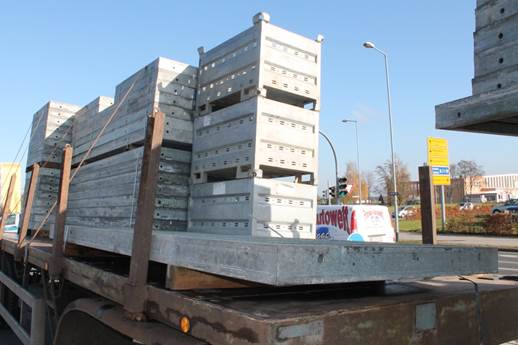 Figure 9 [Dresden Police] At the back of the trailer, the load is in the same condition as when it was loaded. 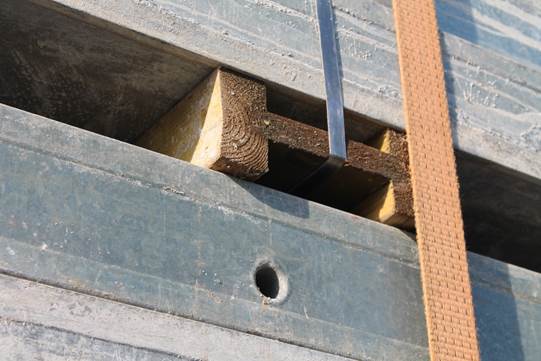 Figure 10 [Dresden Police] Not all the dunnage used is the same. This photograph shows that a formwork beam has been used. So how can a load like this be secured so that it is safe to be on the roads?
In this particular case, the height of the end wall should be increased or the rear window of the cab should be protected by steel bars. If there are no lashing eyes on the tractor vehicle, these must be fitted retrospectively, otherwise the vehicle is not suitable to be used for loads such as this. And the same applies to the trailer. Although it is permitted to secure lashings to the frame, provided that this is strong enough, the lashing hook must not under any circumstances be able to slip. Direct lashings are a good option. What are known as "head loops" can be used to achieve this.
If the load units are not stable enough, individual boards can be prevented from slipping out by placing a europallet or a piece of squared lumber in front of them and incorporating this in the securing arrangements. The important thing is that the load is always secured, even for short trips, because the guardian angel will not always be there. It only remains for us to wish everybody a happy new year and safe driving in 2014. Back to beginning |

